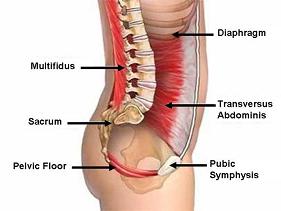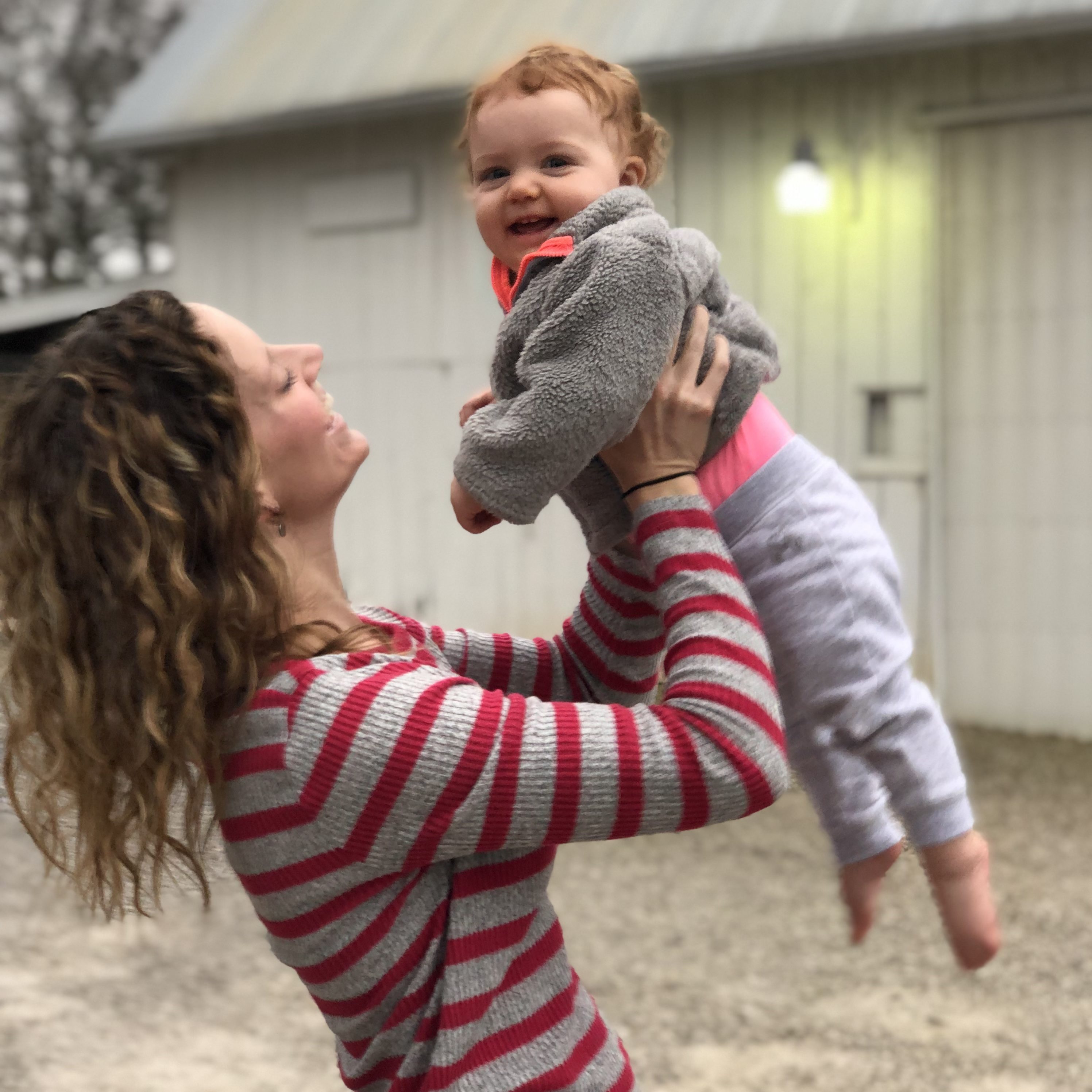If you’re not a mom, and the thought of peeing your pants as an adult weirds you out, move along. This isn’t for you. If you’ve had kids but you’ve never peed your pants before, fantastic. You can move along too. If you’re a dude, you can move along. Or you can read this and be more informed about something that very likely affects the mother of your children.
Why am I writing about something as embarrassing as peeing your pants? Because it’s an issue that affects 1 in 3 women in the first year after pregnancy (1) and as more than half of women over a lifetime (2). Most of these women will never seek care or bring it up with their healthcare provider (3). It’s an issue that patients ask me about all the time. And it’s something I’ve dealt with personally. Based on those three things, I’m assuming it affects A LOT of people who read my blog. And since no one really talks about this, I’ve decided to talk about it and hopefully give you some insight.
I’ll start with a story. This story takes place the day after I was discharged home from the hospital with my firstborn child. We were having a heck of a time getting the nursing thing down and I was still healing from a vaginal delivery. I decided to relax and take a shower, but right before I stepped in my son started screaming because he was hungry. So there I was, naked in my bathroom nursing my baby. And then, I sneezed. And then, I started peeing. All over the floor. Could not stop it no matter how hard I tried, I literally had no control. Utterly mortified, I stood there in disbelief. Did I just pee all over my bathroom floor? Before I could fully process what was had happened, my dog ran in and, I kid you not, started playing in the puddle and splattering urine all over my bathroom.
So I did what any 27-year-old woman one day postpartum, completely sleep deprived would do. Started bawling. When my husband came in to see what happened, I couldn’t even get the words out. At the time I was in PA school and knew what urinary incontinence was, but thought it was something old ladies dealt with. I can tell you exactly how many times my OB, or primary care provider, or even professors in school told me how this might be something that happens after childbirth… a big fat 0. Which is shocking, considering it’s basically to be expected following birth.
Now, that was the only time I literally emptied my bladder. But I did have occasional leaking with stress activities like coughing or sneezing, or especially with vigorous exercise. When I asked my OB about it, he said it was pretty normal. “Do your kegels and it will probably get better.” And it did, mostly. Until I had another kid. And another. And although it always got better, I never felt like the problem resolved and seemed to get worse with each pregnancy. After my third child, I decided to be more proactive. I had a new OB and he recommended I see a physical therapist that specialized in pelvic floor therapy.
I showed up to the first session. “That will be 380 dollars,” the receptionist said.
“Ummmm, excuse me?” I said. After further dialog, I was informed it would be that much for each session until I met my out of pocket max. And they couldn’t give me an idea of how many sessions would be required. [Insert extremely long rant about the ridiculous cost of healthcare here].
“Yeah… I’m just going to check out YouTube and see what I can figure out on my own.” I canceled the appointment.
I didn’t get on YouTube. Once again, I recovered slowly, seeing improvement with time but ending up even further from my pre-baby, pre-leaking days.
By this time I am a full-fledged PA and am very familiar with pelvic floor dysfunction and urinary incontinence. I know it exists because the muscles of the pelvic floor that create a “sling” or “hammock” to support your lower abdominal organs get completely stretched out during pregnancy. And unless you specifically exercise those muscles, it’s hard for them to tighten back up. Just as you would do bicep curls for toned upper arms or crunches for a six pack, you have to specifically exercise these pelvic floor muscles in order to get them back in shape. They’re not different than any other muscle group other than you typically don’t use them a whole lot in normal daily activity, so you have to do specific exercises in order to see results.

By this time, I’ve also made another observation and that is this problem is not rare. In fact, it’s so common that we’ve simply deemed it normal. In my family medicine practice, I am constantly hearing women respond “Oh just the normal stuff that happens after having kids” when asked if they had any bladder issues. My mom friends and I are always joking about not being able to jump on the trampoline or laugh too hard or we might spring a leak.
But the truth is, this is something that can be fixed or at least significantly improved with the right exercises and treatment. Most women I talk to don’t realize this. You just have to know the right exercises to do and how to do them correctly.
Fortunately, many OBs and physicians are getting better about screening women for these questions and referring them to a physical therapist that specializes in pelvic floor therapy. Where I live, this has become such a desired service a whole department now exist just for pelvic health.
As far as my saga goes, I didn’t learn my lesson and got pregnant again (yes, we know what causes this). This time, I was going to play the game correctly and get in with PT right after delivery when my out of pocket max would already be met. Perfect!
Except, as it turns out, having 4 kids means you’re exhausted and limited on time, and the thought of heading across town twice a week for several months right after having a baby completely overwhelmed me.
By this time (4th times a charm, right?) I have learned my lesson and understand the importance of pelvic floor therapy. I researched several options and ended up buying a program online cowritten by a fitness instructor and a Ph.D. exercise physiologist that specializes in pelvic health. I followed this 4-week program and was amazed at the difference it made.
Strengthening my pelvic floor has just become part of my exercise routine. The exercises are not rigorous or difficult or time-consuming. Just like any other muscle group, once they’re strong it doesn’t take as much effort to keep them in shape as it does to get them toned in the first place. I don’t have any issues exercising (although I haven’t tested my luck at Sky Zone yet). I recommend pelvic floor therapy for anyone who has issues with stress incontinence after childbirth or any other reason. I screen women for this issue during their wellness exams because it so often gets overlooked or chalked up as normal.
During pregnancy, an extreme amount of focus is put on your health and well-being. You go to the doctor every few weeks leading up to delivery. Then, your body undergoes a MAJOR event through childbirth, whether it’s vaginal or cesarean. You’re monitored closely for 48 hours. Then, your DONE. You get a quick checkup 6 weeks later and then off you go, see you in a year.
It’s just crazy. It’s crazy that after a knee or shoulder surgery you’d obviously complete physical therapy as part of your recovery. But push a baby out, something arguably much more traumatic to the body than surgery, and nothing. Go home and recover while you’re sleep deprived and a tiny human is 100% dependent on you [Insert another rant about healthcare coverage and how taking care of women postpartum isn’t financially valuable].
I think providers are finally getting on board because as I’ve mentioned pelvic floor physical therapy is in high demand. This is a very good thing. And although I didn’t see a therapist one on one (healthcare professionals make the worst patients sometimes), I whole-heartedly respect their knowledge and skill set. I tell my patients to think of it like having no idea how to exercise and walking into a gym by themselves versus going with a personal trainer. A pelvic floor therapist’s role is invaluable.
So, moms, if you’re still out there peeing your pants and it bothers you, go speak with your healthcare provider. Ask to see a pelvic floor therapist. If that’s not a possibility, look for a legitimate program you can follow, preferably one created by an expert in this field. If you’ve been told this is normal, know that although it’s COMMON that doesn’t mean it’s NORMAL. It can be improved like any other musculoskeletal issue.
I wish you many pee-free trampoline excursions in your lifetime!



